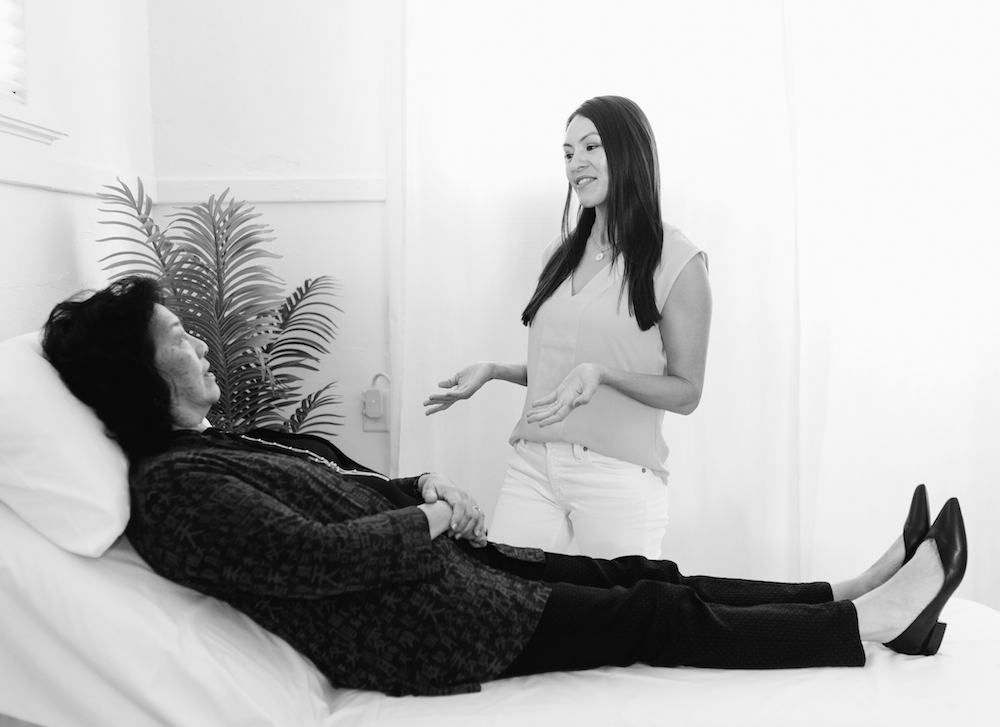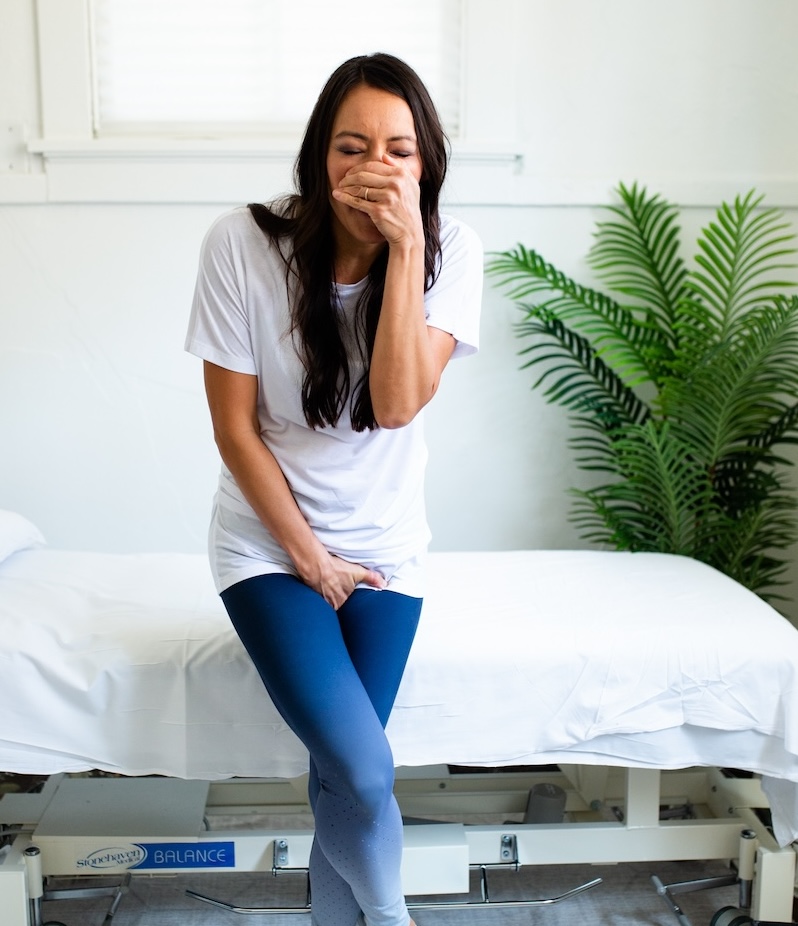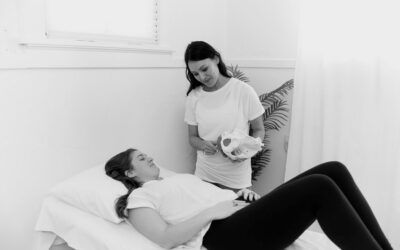You probably know that menopause presents a whole new set of changes in someone’s life. We discuss hot flashes, sleep issues, and mood swings – but did you know that there is a connection between menopause, pelvic pain and your pelvic floor?
Changes in hormones can lead to symptoms such as pain with sex, prolapse, leakage, and more. The good news is that there ARE things you can do to help alleviate these pelvic floor symptoms!
Menopause starts when 12 consecutive months have passed since your menstrual cycle. Women usually go through menopause between 40-60, but perimenopause, the phase leading up to menopause, can begin years before.
Menopause, Pelvic Pain and Dysfunction
During perimenopause and menopause, an individual will experience a decrease in estrogen. Decreased estrogen levels are what causes menstrual cycles to become inconsistent and less frequent. It also affects both blood flow and lubrication of the muscles and tissues of the pelvic floor.
Common symptoms include:
- Changes in pelvic floor muscle strength
- Vaginal dryness
- A decrease in sexual desire
- Incontinence
- Dramatic mood swings
- Difficulty sleeping
- Hair loss
- Weight gain
- Depression and anxiety
How Estrogen Affects the Pelvic Floor
You may experience cold sweats and chills because of your drop in estrogen levels during menopause. Low estrogen levels also mean a dry vagina. When vaginal tissue is thin and dry, it is more prone to tearing which is why you may experience mild bleeding with intercourse. Lower estrogen levels also link to a lower libido, which means you may experience a low sex drive.
Decreased estrogen levels during perimenopause and menopause contributes to:
- Decreased sexual desire.
- Decreased lubrication.
- Less vaginal discharge.
- Dryness of vulvar and vaginal tissues.
The changes in your vulvar and vaginal tissues can cause painful sex, bleeding during sex, irritation of vulvo-vaginal tissues, and increased bacterial infections.
Pelvic Pain
With the changes brought on by menopause, sex may be the last thing you are interested in or something you long for. Decreased production of estrogen by your ovaries leads to thinning of the vulvar and vaginal tissue, vaginal dryness, painful sex, and even bleeding or spotting during sex.
Here are ways to help continue to have and enjoy sex into your later years:
- Moisturizing by using natural, hormone free moisturizers like coconut oil, vitamin E oil, or all-natural balms can help with dryness. You can use these all-natural moisturizers inside your labia, at your vaginal opening, and inside the vaginal canal. Use nightly (or as often as you like) to help soothe sensitive tissues.
- Use a water-soluble lubricant for intercourse (slippery stuff is my fave).
- Use it or lose it. Consistent and routine blood flow to the pelvic region from arousal, orgasm, and exercise all help maintain healthy tissues and pelvic floor muscles to keep your vagina and vulva ready to rumble.
- Try topical hormone replacement. Talk to your medical provider about using a topical hormone replacement cream or suppository to directly affect the vulva and vagina.
Urinary Incontinence
Many going through perimenopause or menopause experience incontinence because of a weakened pelvic floor. If you have incontinence, try these bladder tips:
- Stop drinking two hours before bed to decrease fluid intake before falling asleep.
- Front load your fluids into the first half of the day to decrease how much you consume in the evening and before bedtime.
- If the urge to pee arises, perform 5 Kegels while in bed and take 5 deep breaths to suppress the urge to urinate
- Avoid consuming bladder irritants at night (alcohol, coffee, caffeine) which can increase your urge to pee.
Sexual Function
Decreased estrogen and testosterone levels, along with increased stress and lack of sleep, can decrease one’s sexual desire. This is totally normal but is also discouraging to many who want to continue to have enjoyable and pleasurable sex.
Low estrogen levels make vaginal tissues thin and dry, causing pain, a raw feeling, or mild bleeding during sex. The following can help maintain a healthy and enjoyable sex life into your later years.
- Getting creative by planning ahead for a weekly romp, having a morning session before afternoon fatigue hits, or even bringing in different sex toys to spice things up in the bedroom can be helpful.
- Use water-soluble lubricants for sexual activity and intercourse to minimize friction and enhance pleasure.
- Your medical provider may also recommend a topical hormone replacement to “plump” up the vaginal tissue and/or a systemic hormone replacement like a cream, lotion or patch that increases estrogen and testosterone throughout your system.
Treatment Options
Many individuals experience these symptoms and fail to recognize that they are related to perimenopause or menopause. Understanding that hormone changes cause these symptoms can empower you to take action and make the transition easier.
Regular exercise and relaxation habits, including meditation and yoga, help decrease stress and improve sleep. Working with your doctor to balance or manage your hormones and relieve specific symptoms is important.
Another great option is pelvic floor PT! Whether in person or virtually, this can greatly improve your quality of life once you start feeling those menopause symptoms.
Pelvic Floor Exercises for Menopause
If you have chronic pelvic pain or pressure during perimenopause or menopause, you should start an exercise routine. Movement will help. If you aren’t active already, start simple with a walk, jog or yoga class.
That being said, the number one pelvic floor muscle exercise prescribed for menopause is likely kegels. Check with a pelvic floor PT to be sure kegels and pelvic floor strengthening is what you need.
Below are my top tips to relieve pelvic pain during menopause. Reach out or schedule an online consult if you have any questions.
- Perform pelvic floor muscle exercises such as Kegels for weakness
- Work to “train” your bladder with urge suppression techniques
- Avoid bladder irritants and take care not to drink too much water (but stay hydrated)
- Start a strength training exercise routine to build muscle mass throughout your body and your pelvic floor
Is Pelvic Floor PT Needed for Menopause?
Pelvic floor physical therapists treat the muscles and tissue in the pelvic region, which affect bowel, bladder, and sexual health.
We also specialize in treating folks experiencing perimenopause or menopause symptoms by:
- Working to strengthen the pelvic floor muscles
- Improving the elasticity of the vagina to minimize pain and tearing with intercourse
- Helping prevent bladder leaks that increase with aging.
Working with a pelvic floor physical therapist can be extremely beneficial in alleviating symptoms.
We often do not discuss the extremely intimate pelvic floor changes we experience with menopause. Know you are not alone, and there is help available! It’s never too late to talk with your medical provider or to work with a pelvic floor physical therapist if you are experiencing any of these symptoms.
Online Pelvic Floor Workouts
V-Hive members have on-demand access to eight pelvic floor workout programs to help prevent and overcome common pelvic floor problems. And all it takes is just three, 10-minute sessions/week!
If you’re not sure where to start, take our free quiz to find out!





